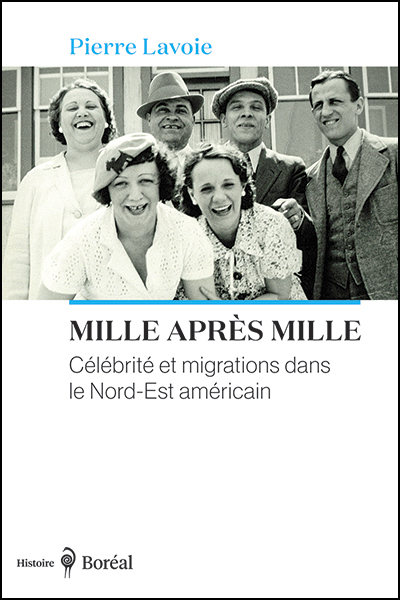About the author | About the book | Author's notes
"The book aims to offer the historical community and the general public a nuanced mirror image of how individuals from the same population can, over time, be assigned different identities to the point of perceiving themselves as Others."
About the author

A native of L'Isle-Verte, Pierre Lavoie is a historian, professor in the Department of Humanities at the University of Quebec at Trois-Rivières, and a member of the Centre interuniversitaire d'études québécoises (CIEQ) and the Observatoire interdisciplinaire de création et de recherche en musique (OICRM). He specializes in the transnational cultural history of Quebec and North American Francophone communities. His work focuses on the relationships between celebrity, popular culture, media, and collective identity. An avid music and radio enthusiast, he can be heard regularly on Ici Radio-Canada Première.
About the book
 What do Mary Travers, known as La Bolduc and now considered the first female songwriter in Quebec, Rudy Vallée, who perfected the art of crooning on Broadway and in Hollywood, and tour manager Jean Grimaldi, who made Alys Robi and Olivier Guimond Jr. famous throughout the northeastern United States, have in common? All three have close ties to communities that emerged from a century of French Canadian migration to New England. All three, popular artists themselves, either migrants or descendants of migrants, are subversive, nomadic figures who oppose the sedentary way of life and thinking by traveling the roads between Montreal and New York.
What do Mary Travers, known as La Bolduc and now considered the first female songwriter in Quebec, Rudy Vallée, who perfected the art of crooning on Broadway and in Hollywood, and tour manager Jean Grimaldi, who made Alys Robi and Olivier Guimond Jr. famous throughout the northeastern United States, have in common? All three have close ties to communities that emerged from a century of French Canadian migration to New England. All three, popular artists themselves, either migrants or descendants of migrants, are subversive, nomadic figures who oppose the sedentary way of life and thinking by traveling the roads between Montreal and New York.
Mille après mille tells the story of these artists as much as it does of the working-class families they entertained, for whom mobility was a way of life and a means of subsistence, even a culture and an identity. More specifically, it is the French-Canadian “imagined community” across the border that emerges, shaped by the technological and media context—the democratization of the automobile, the popularization of records, radio, cinema, and television—which led to the rise of Travers, Vallée, and Grimaldi.
Historian Pierre Lavoie offers a fascinating investigation into the public memory of French speakers in the American Northeast, illustrating the importance of celebrity, the media, and what is often pejoratively referred to as mass culture in the creation, popularization, and circulation of identities and belonging in the 20th century.
“Mille après mille” tells the story of nomadic artists (Mary Bolduc Travers, Rudy Vallée, Jean Grimaldi) and the working-class families of the American Northeast whom they entertained and for whom mobility was a way of life and a means of subsistence. The book aims to offer the historical community and the general public a nuanced mirror image of how individuals from the same population can, over time, be assigned different identities to the point of perceiving themselves as Others."
